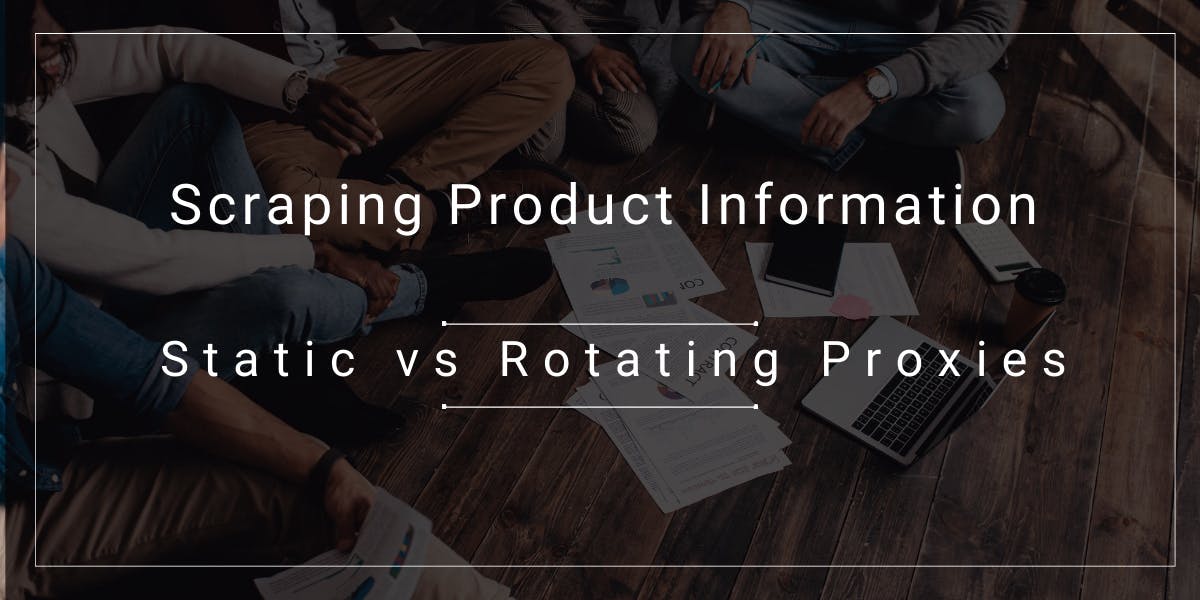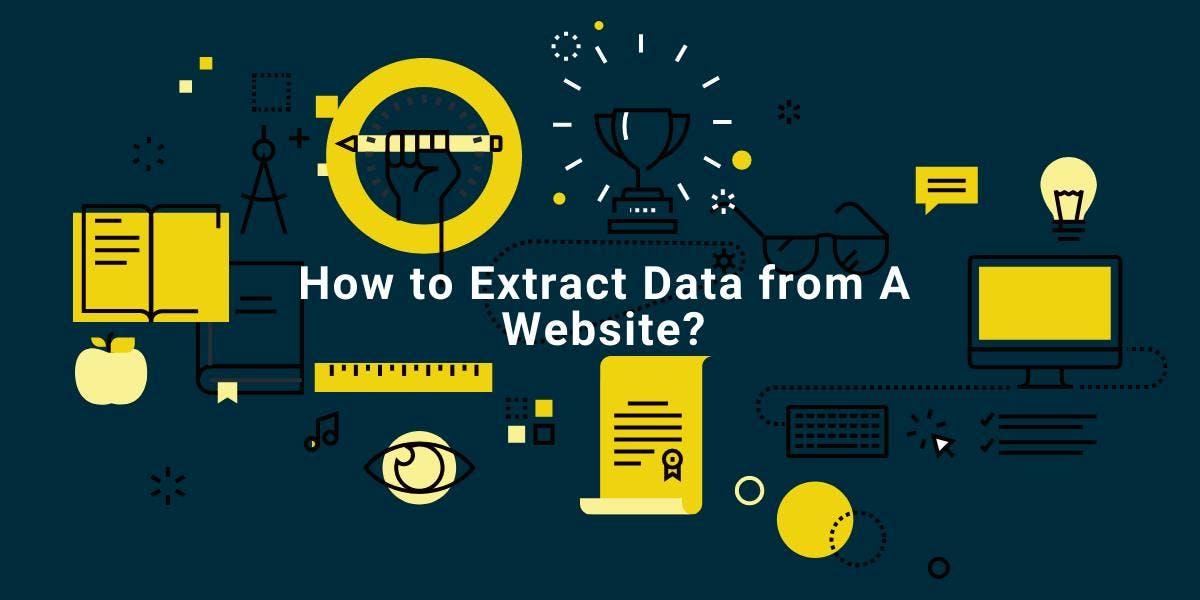Building Price Scraping Tools: Picking the Best Proxies
Flipnode on May 24 2023

In today's era, web scraping is becoming increasingly familiar to a wider audience. It is a dynamic and thriving method of extracting data, allowing for the automated collection of a vast amount of publicly available information.
This article delves deeper into the utilization of proxies for pricing intelligence and other applications, such as MAP (Minimum Advertised Price) monitoring. Firstly, we will establish the concept of a price scraper. Secondly, we will explore the significance of price monitoring for businesses that have an online presence. Additionally, we will examine the debate surrounding whether a company should develop an in-house price scraper or opt to purchase an existing web scraping service. Lastly, we will highlight the essential elements of a price scraper and provide valuable insights for businesses considering the use of proxies for price intelligence.
What is price scraping?
Price scraping involves the collection of publicly available product price information from e-commerce websites using web scrapers, also known as price scrapers. As online retailers frequently update and adjust their prices, obtaining accurate and real-time data for price intelligence necessitates dependable solutions.
What is a price scraper?
A price scraper refers to a bot or software designed to extract prices and other relevant information from e-commerce websites. It automates the process of gathering pricing data from these sites, allowing for efficient analysis and comparison.
Although price scrapers may appear simple on the surface, their importance for businesses with an online presence cannot be overlooked. Let's delve deeper to explore the reasons behind the necessity of price scrapers in such businesses.
The undeniable reality of the e-commerce game: how to extract competitors’ prices
The landscape of e-commerce-based business strategies has undergone a significant transformation. In the current era, real-time data plays a pivotal role in shaping successful e-commerce policies. Among the various types of real-time information, pricing data holds utmost importance as it allows businesses to formulate effective strategies and attract customers. As a result, understanding how to scrape prices from websites has become increasingly crucial for achieving success in the e-commerce industry, and this is where price scraper tools come into play.
According to research conducted by BigCommerce, the top three factors influencing Americans' shopping preferences are price (87%), shipping cost and speed (80%), and discount offers (71%). Furthermore, over 86% of consumers compare prices across different online platforms before making a purchase, and approximately 78% of shoppers opt for lower-priced items over more expensive ones.
Clearly, it is evident what consumers desire and prioritize. So, how can businesses address these demands effectively? The key lies in being price competitive and adapting pricing strategies accordingly. To achieve this, businesses must swiftly gather intelligence on their competitors' pricing strategies, product catalogs, promotions, discounts, and special offers, among other factors.
Fortunately, the internet provides a wealth of knowledge waiting to be tapped into. All a business needs is a reliable price scraper tool to unlock the hidden value and drive growth for their online store. So, why not leverage this opportunity and propel your e-commerce business forward?
Price scraper tools – build or buy?
The question at hand is of great importance, although it often receives insufficient attention from businesses seeking price intelligence data. Whether a company is just beginning to explore web scraping practices or has already made a decision, it is crucial to continuously consider and reassess the following question: Should the business build its own in-house price scraper to gather publicly available data?
Let's delve into a scenario where a business opts to develop its own price scraper solution.
Building a price scraper
Similar to any endeavor in life, success in price scraping comes with practice and accumulated knowledge. Price scrapers may appear simple on the surface, but their effectiveness relies on the necessary expertise and resources.
However, businesses must be mindful that investments require ongoing maintenance. The reality is that web scraping mechanisms need to be regularly updated, refined, and adjusted to ensure optimal performance. Consequently, the initial setup costs may differ from initial expectations. Moreover, expenses can vary significantly depending on the specific targets of the price scraper.
Established online stores are well aware of the value of data and often implement obstacles to hinder price scrapers. These obstacles may include bot detection algorithms, IP blocks, or other measures to prevent scraping. Additionally, these stores frequently update their bot detection algorithms, which adds to the development costs of a price scraper tool.
In terms of maintenance, dedicated and experienced professionals are necessary to oversee the entire operation. This is an additional cost that should always be factored into the equation when considering this option.
Furthermore, developing a process to extract prices from websites may require monitoring thousands of pricing intelligence data points. Some of these data points will pose greater challenges, while others may be more accessible. Regardless, effectively collecting all the required data and consolidating it into structured datasets may necessitate the expertise of senior developers proficient in using price scrapers.
However, these considerations only address the cost aspect. What about the time-consuming tasks involved in managing a price scraper and the potential lack of real-time data when a business needs to promptly respond to dynamic pricing changes? Undeniably, these factors can result in lost revenue.
On the other hand, building an in-house data gathering solution provides the flexibility to tailor it according to specific requirements. While it may initially involve time and sunk costs, with the accumulation of know-how, human capital, and, most importantly, essential resources, it can become a viable long-term option.
Choosing proxy providers
Choosing the appropriate proxy provider is a crucial aspect to consider. A recent comprehensive market research paper by Proxyway highlighted the significance of evaluating global proxy service providers. The report's performance evaluation section emphasized the importance of thoroughly assessing proxies for each data source, particularly those that are widely popular.
Opting for unsuitable or unreliable proxies can often lead to subpar performance of the in-house data retrieval mechanism. In essence, it is essential to ensure that the business's data mechanisms are fueled with the right resources.
Buying the correct tools for web scraping
At this point, you should have a good understanding that obtaining immediate and real-time data is crucial for effective price scraping, allowing businesses to adjust their pricing tactics and strategies accordingly.
If a company already practices web scraping and decides to invest in a price scraper tool, they can avoid the need to manage the infrastructure in-house. This enables them to acquire the desired data promptly and focus on gaining insights without delay.
However, one hurdle that might concern business decision-makers is the cost associated with these tools. Proxy service providers make ongoing investments in these tools and incur maintenance expenses.
That being said, the convenience of obtaining the necessary data in a hassle-free manner might outweigh the cost. However, businesses should still be cautious and ensure that they choose a product that provides the precise data they require. In some cases, it may be challenging to customize these tools to align perfectly with a business's specific needs and preferences. Therefore, companies should explore flexible options and consider important factors such as the format of the provided data and how effectively it can be interpreted.
Wrapping it all up!
Experienced e-commerce players understand the crucial role that numbers play in their trade. To remain competitive in a market where consumers are increasingly price-sensitive, businesses must identify and utilize these numbers effectively to secure their market share. One of the easiest and most effective ways to access this market share is by utilizing a price scraper.
However, success in price scraping ultimately depends on having the right expertise and a robust solution that enables businesses to scrape prices efficiently and cost-effectively. By doing so, companies can outsmart their competition and gain a competitive edge in the market.



